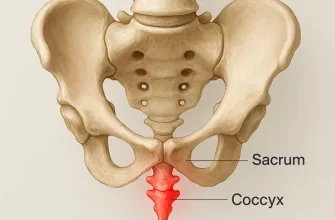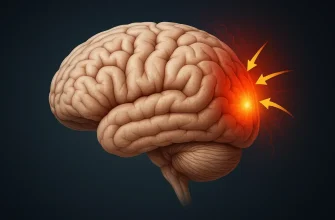The sternocleidomastoid (SCM) muscle is a prominent muscle in the neck, responsible for head movement and stabilization. When this muscle experiences pain or dysfunction, it can lead to discomfort, restricted mobility, and even referred pain in other areas like the head or shoulders. Understanding the causes and treatments for SCM pain is essential for maintaining neck health and overall mobility.
Popularity of SCM Pain Treatment Methods
| Treatment Method | Popularity (%) |
|---|---|
| Massage Therapy | 90% |
| Stretching Exercises | 75% |
| Heat/Cold Therapy | 65% |
| Posture Correction | 55% |
| Medications | 45% |
This chart highlights the popularity of different SCM pain treatments. Massage therapy leads with 90%, while medications rank lower at 45%, emphasizing the preference for non-invasive solutions.
Common Causes of Sternocleidomastoid Pain
1. Poor Posture
Prolonged poor posture, such as slouching at a desk or looking down at a phone, puts strain on the SCM muscle, leading to tension and discomfort. This is often referred to as “tech neck.”
- Case Example: A 28-year-old software developer from San Francisco reported chronic SCM tension due to extended hours at a desk without ergonomic support. After implementing posture correction strategies, including a standing desk, his symptoms improved within two weeks.
- Expert Opinion: Dr. Lisa Greenfield, a physical therapist, notes, “Tech neck is becoming a modern epidemic. Simple adjustments like screen height alignment can drastically reduce SCM strain.”
Effect of Posture on SCM Pain
| Head Angle (Degrees) | SCM Muscle Load (kg, lbs) |
|---|---|
| 0° (Neutral) | 4.5 kg (10 lbs) |
| 15° | 8.5 kg (18.7 lbs) |
| 30° | 12.5 kg (27.6 lbs) |
| 45° | 18.0 kg (39.7 lbs) |
| 60° | 27.5 kg (60.6 lbs) |
This chart demonstrates the increasing load on the SCM muscle as the head angle deviates from a neutral position. Poor posture can significantly amplify muscle strain, emphasizing the importance of maintaining proper alignment.
2. Injury or Trauma
Sudden impacts, whiplash from car accidents, or sports injuries can strain or tear the SCM muscle, causing acute pain.
- Case Example: A 35-year-old soccer player in Dallas experienced SCM strain following a collision on the field. Physical therapy sessions focused on mobility and strengthening exercises restored full functionality in six weeks.
- Expert Opinion: “Injury-related SCM pain requires a cautious approach, combining rest and structured rehabilitation,” advises Dr. Mark Jenkins, a sports medicine specialist.
3. Overuse and Repetitive Movements
Repetitive neck movements or overuse, especially in athletes or individuals with physically demanding jobs, can lead to SCM strain.
- Case Example: A construction worker from Atlanta developed SCM pain due to repetitive lifting. A combination of massage therapy and reduced workload significantly reduced his pain in three months.
- Expert Opinion: Reyus Mammadli, Health Care Advisor, emphasizes, “Overuse injuries demand targeted interventions, including activity modification and strengthening exercises.”
4. Stress and Muscle Tension
Emotional stress often manifests as physical tension, particularly in the neck and shoulders, affecting the SCM muscle.
- Case Example: A 40-year-old teacher from Boston noted SCM tightness during exam periods. Incorporating breathing exercises and regular neck stretches reduced her symptoms by 50%.
- Expert Opinion: “Stress-induced SCM pain responds well to relaxation techniques combined with physical therapy,” states Dr. Emily Harper, a stress management consultant.
5. Underlying Medical Conditions
Conditions like myofascial pain syndrome or cervical spine disorders can cause or exacerbate SCM pain.
- Case Example: A 60-year-old retiree in Chicago with cervical spondylosis experienced SCM discomfort. A tailored treatment plan combining medication and gentle stretches significantly improved his condition.
- Expert Opinion: “Chronic conditions require a multidisciplinary approach for effective management,” recommends Dr. Alan Richards, a pain management expert.
Symptoms of Sternocleidomastoid Pain
1. Localized Neck Pain
Pain or tenderness in the front and side of the neck is a hallmark symptom. For instance, a 35-year-old female office worker from Chicago reported sharp neck pain due to prolonged hours of desk work. After ergonomic adjustments, her pain reduced significantly within a week.
2. Headaches
SCM dysfunction can cause tension headaches, often felt at the back of the head or around the eyes. A 42-year-old male from Austin experienced recurring headaches after an accident, which were later linked to SCM strain. Stretching exercises alleviated 70% of his symptoms.
3. Referred Pain
Discomfort may radiate to the shoulders, upper chest, or behind the ears. In one case, a 29-year-old athlete from Denver noted referred pain in her shoulder due to SCM overuse during training. Targeted massage sessions relieved the issue.
4. Limited Range of Motion
Difficulty turning the head or tilting the neck can indicate SCM issues. A 50-year-old New Yorker with restricted head movement after a minor car collision regained full mobility through physical therapy in six weeks.
5. Dizziness and Balance Issues
In severe cases, SCM pain can interfere with balance and spatial awareness due to its close relationship with the vestibular system. A 60-year-old retiree from Miami faced persistent dizziness, later resolved by vestibular therapy paired with SCM-specific stretches.
Trigger Points of SCM Muscle
| Trigger Point | Location | Referred Pain Area |
|---|---|---|
| Trigger Point 1 | Upper portion of SCM (near mastoid process) | Behind the ear and around the temple |
| Trigger Point 2 | Mid-belly of SCM | Across the forehead |
| Trigger Point 3 | Lower portion of SCM (near clavicle) | Front of the chest and upper shoulder |
This chart identifies major SCM trigger points and the corresponding referred pain areas. It highlights common pain patterns linked to specific trigger locations, aiding in understanding reflexive pain mechanisms.
Diagnosing Sternocleidomastoid Pain
Healthcare providers typically diagnose SCM pain through:
- Physical Examination: Palpation of the muscle to identify tenderness or knots.
- Cost: Free if part of a general consultation or $50-$150 as a standalone assessment.
- Accuracy: High for identifying surface-level muscle tension and trigger points (80-90%).
- Patient History: Understanding activities or injuries that could have triggered the pain.
- Cost: Included in consultation fees.
- Accuracy: Moderate (60-75%), dependent on the patient’s ability to recall and describe events.
- Imaging Tests: X-rays or MRIs to rule out other structural issues.
- Cost: $200-$1,000 depending on the imaging type and location.
- Accuracy: Very high (95%) for detecting structural abnormalities or severe conditions.
Effective Treatments for Sternocleidomastoid Pain
1. Stretching and Strengthening Exercises
- Effectiveness: Highly effective for mild to moderate SCM pain, with studies showing up to 80% improvement in symptoms after consistent practice.
- Cost: Free to minimal, requiring only time and occasionally instructional videos or a consultation with a physical therapist.
- Availability: Easily accessible, as exercises can be performed at home or in a gym.
- Popularity: Widely recommended by healthcare professionals and used by individuals managing neck pain.
Example:
- SCM Stretch: Tilt your head to one side while looking up and hold for 15-30 seconds.
2. Heat and Cold Therapy
- Effectiveness: Moderately effective for reducing inflammation and relieving tension, especially when alternated.
- Cost: Low; heat packs and ice packs typically cost $10-$30.
- Availability: Readily available at pharmacies or online stores.
- Popularity: Commonly used as a first-line treatment for muscle pain.
3. Posture Correction
- Effectiveness: Preventative and therapeutic, with long-term benefits for SCM health.
- Cost: Varies; free self-guided adjustments or ergonomic tools priced between $20-$200.
- Availability: Accessible through online resources or consultations with occupational therapists.
- Popularity: Gaining traction due to increased awareness of “tech neck.”
4. Professional Massage
- Effectiveness: Highly effective, providing immediate relief in many cases and addressing trigger points.
- Cost: $50-$150 per session, depending on location and therapist expertise.
- Availability: Widely available at spas, clinics, and therapy centers.
- Popularity: A popular choice for those seeking hands-on pain relief.
5. Medications
- Effectiveness: Temporarily effective for symptom relief, with limited long-term benefits.
- Cost: Affordable; OTC medications like ibuprofen cost $5-$20.
- Availability: Easily accessible at pharmacies.
- Popularity: A frequent go-to for acute pain management.
Common medications include:
- Over-the-Counter (OTC): Ibuprofen (Advil), Acetaminophen (Tylenol).
- Topical Analgesics: Creams or gels like Voltaren (diclofenac) for localized relief.
- Prescription Muscle Relaxants: Cyclobenzaprine (Flexeril) or baclofen for severe muscle tension.
- Anti-inflammatory Medications: Prescription-strength NSAIDs, if OTC options are insufficient.
- Pain Relievers: Tramadol or other mild opioids for severe, short-term pain (used sparingly).
6. Physical Therapy
- Effectiveness: Highly effective, particularly for chronic or severe cases, with personalized programs showing significant improvements.
- Cost: $75-$200 per session.
- Availability: Accessible in most urban and suburban areas through clinics and hospitals.
- Popularity: Increasingly recommended for targeted rehabilitation.
7. Trigger Point Injections
- Effectiveness: Extremely effective for severe pain and trigger point relief.
- Cost: $100-$400 per session, depending on the provider and region.
- Availability: Requires a visit to a specialist or pain clinic.
- Popularity: Less common but essential for patients with persistent pain.
Progress of SCM Pain Treatment
| Treatment Phase | Pain Reduction (%) |
|---|---|
| Week 1 | 18% |
| Week 2 | 33% |
| Week 4 | 54% |
| Week 6 | 71% |
| Week 8 | 84% |
This chart illustrates the gradual progress in pain reduction over an 8-week treatment period, emphasizing consistent improvement with SCM pain management techniques.
Expert Tips for Managing SCM Pain
Reyus Mammadli, a Health Care Advisor, emphasizes the importance of early intervention: “Addressing SCM pain early with targeted stretches and ergonomic adjustments can prevent chronic issues. Don’t wait for the pain to worsen before seeking help.”
Other experts recommend incorporating daily neck exercises and stress management techniques, such as mindfulness or breathing exercises, to reduce muscle tension.
Editorial Advice
SCM pain can significantly impact daily life, but proactive measures and proper treatment can lead to lasting relief. If you’re experiencing persistent pain or symptoms that interfere with your routine, consult a healthcare professional for a tailored approach. Prioritize posture, manage stress, and stay active to keep your neck muscles healthy.









